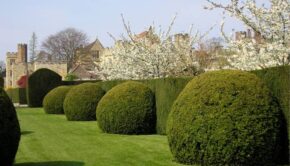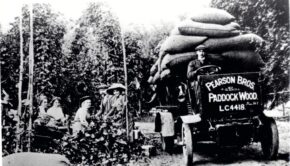Gardening – Floral Hand Grenades!
Dig a hole, lob in the bulb of your choice and wait for your horticultural high explosive to do its thing – gardening doesn’t come much easier than this! And what a choice… at this time of the year garden centres, supermarkets, even garage forecourts are stuffed to the gunnells with everything from the little firecrackers that are anemones and scillas to ‘tree’ lilies which grow to over 2 metres. The only difficult bit is trying to choose from the hundreds of colourful packets on the display stands; all of them are a bargain compared to the prices of plants in pots – only a packet of seeds makes more financial sense!
There’s something innately satisfying about bulbs – they are such neat and efficient pieces of natural engineering. As a lad, I always remember blowing all my pocket money in our local Woolworths on a really weird but amazing bulb which was tantalisingly named ‘The Voodoo Lily’ (real name Sauromatum venosum). How could I resist one of these, particularly as it said it would flower on a windowsill without water? I ended up buying dozens over the years, which no doubt helped stave off Woolies eventual sad demise. Sadly, my mother wasn’t quite so amused when she became acutely aware of exactly why the ‘Voodoo Lily’ had aquired such an interesting title – its grotesquely phallic shaped flowers were pollinated by flies and therefore had the unique bouquet of very rotten meat, just what you need on your kitchen windowsill! Anyway, I soon graduated to even more exotic bulbs which even ‘the wonder’ of Woolies didn’t stock, most of which had an exotic perfume to match, so my pocket money allowance was suitably revised upwards.
The term bulb can be very confusing because in horticultural terms it covers everything from Dahlia tubers to Crocus corms – literally thousands (I haven’t googled the exact number) of very different plant forms. The fact that they have a bulb means they have an inbuilt resistence to being killed off by natural or man-made disasters, again reinforcing their credentials as some of the easiest and cheapest ways of introducing colour and form in the borders. Their versatility means you can use them in containers, either on their own or in combination with other plants, or in a natural setting such as growing in grass as they would do in the wild.
If you’re lucky enough to have your own meadow, then what could be nicer than selecting something like the Snake’s Head Fritilaria or our native Narcissus and launching handfuls (grenade style!) into the grass and then planting them where they end up – unless, of course, you prefer serried ranks in the municipal manner?! The infinite variety in the combinations of colours, forms and flowering times makes it possible to have something of interest at every season of the year, from the first snowdrops of spring, followed by tulips and daffodils, through to gladiolus and nerines in autumn. As I write this I can just see the flower heads on a Crinum bulb which originally came from South Africa but has lived in my Nottinghamshire garden for years now. It seems happy enough and retreats underground to survive the annual arctic freeze.
On a final note, I have to pay a tribute to our friends over the Channel who, as well as bringing us Edam cheese and wooden shoes, are at the epicentre of the worldwide bulb industry. The Dutch were the first to spot the potential of the bulb and luckily had the perfect growing conditions in their fertile (and very flat!) agricultural lands. They set about building an extremely successful commercial operation that now exports over 2 billion bulbs annually – remarkable.
I raise my glass of Advocaat in salute.’Proost’ my Dutch friends!






Comments